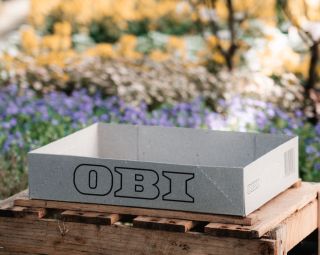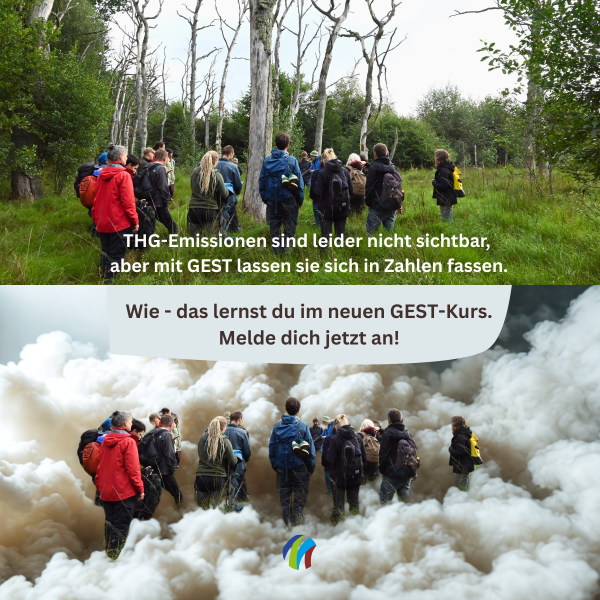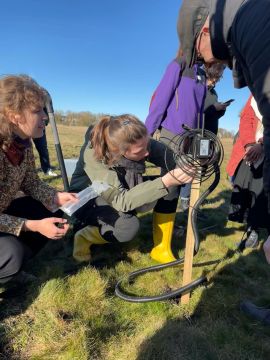News
April 2025
Paludiculture in a garden box
by Helena Plochberger (comments: 0)
New pilot product!

25/04/2025 "Achieving mo(o)re together" - this is the motto under which OBI Group Holding, a member of the „Alliance of Pioneers“ of the toMOORow initiative, launched its first paludi pilot product in April: a plant transport box made from 10% reed canary grass. From the “field” to the OBI store, the box passes four different stations:
At the Swabian Donaumoos-Zweckverband, the reed canary grass is harvested on rewetted peatland in the Donaumoos. The company Fiber365 processes the paludiculture biomass into fibers using an innovative, environmentally friendly process. The LEIPA Group uses a mixture of these fibers, among others, to produce a cardboard base. Leopold GmBH Verpackungen then uses this to produce the actual cardboard.
This is intended for customers to transport small plant pots from the markets to their homes. In Germany alone, the DIY and garden market sells around 46 million plants every year.
See peatlands and estimate greenhouse gas emissions
by Helena Plochberger (comments: 0)
New GEST course
04/04/2025 Looking at peatlands and ... estimating greenhouse gases? Being able to do this is not a bad thing and is increasingly in demand. Recording greenhouse gases is a decisive step towards reducing them and thus combating the climate crisis. The Greifswald Mire Center not only has the right method, but also the training - the GEST course from July 2-4 in Greifswald!
GEST stands for Greenhouse gas Emission Site Type. The idea is to determine the greenhouse gases produced by water levels, land use and vegetation.
Participants will learn:
- to record water levels in the field
- to create a greenhouse gas balance sheet and determine the potential savings
The practical application takes place in two mapping exercises:
- in a degraded grassland in the Ryck lowlands and
- on the unused wet site
In addition, the following questions, among others, will be discussed:
- How can the GEST approach be classified in the climate policy framework and what other areas of application are there?
- How trustworthy are carbon certificates and what criteria are needed for them?
The course is aimed at anyone who would like to be involved in the planning or implementation of peatland and climate protection projects. There is currently a waiting list and the course fee is 370 Euro (reduced rate 220 Euro). Knowledge of botanical species is a prerequisite, previous knowledge of peatland and climate protection projects is desirable.
Register now to actively contribute to peatland and climate protection with the GEST approach!

Mire for Minister
by Helena Plochberger (comments: 0)
Current research presented

01/04/2025 We were able to present the current status of research and databases to Environment Minister Steffi Lemke (BMUV) during her visit at the Greifswald Mire Center.
Mire research plays an important role in the research strategy of the University of Greifswald, explained Vice-Rector Peter Michalik in his opening speech. The minister was interested in the measurements of plant biomass and greenhouse gases in the mesocosm facility, the reed collection and the oldest book in the bog library explained by Franziska Tanneberger, Gerald Jurasinski, Sebastian van der Linden and Hans Joosten, but she was also particularly impressed by our peat mosses, which Greta Gaudig showed her.
Paludiculture, biodiversity and peat formation were among the other topics part of the exchange - as well as the outlook for future research, as it will take place in the Collaborative Research Center of the German Research Foundation (DFG) WETSCAPES 2.0. Therefore, the GMC representatives were very pleased that the Minister was accompanied by Nathalie Niederdrenk and Ulf Hauke from the Department of Soil and Mire Protection.
Ground-breaking ceremony & Sernitz
by Helena Plochberger (comments: 0)
Rewetting has started

01/04/2025 A symbolic ground-breaking ceremony marks the start of the establishment of a wet meadow paludiculture by the toMOORow initiative - wet mires for a sustainable future. The peat meadows in the Sernitz Mire serve as a model project: drainage ditches are now being filled in, sills are being built in the flow to retain water and a sustainable use through paludiculture covering an area of around 80 hectares will then be established with local farmers. The measures help to keep water in the landscape, reduce greenhouse gas emissions by up to 1,200 tons of CO₂ equivalents per year and enable the reintroduction of typical peatland plant and animal species.
The initiative is thus continuing years of work to restore natural conditions in the Sernitz Moor in the “Schorfheide-Chorin” biosphere reserve as part of the LIFE project “Lesser Spotted Eagle”. In consultation with local residents and land users, measures for water retention were developed, pastures for water buffalo were established and a mire experience trail was designed, to name just a few examples of the successful project.
The Federal Ministers Steffi Lemke and Cem Özdemir attended the launch, as they see the activities in the Sernitz as a strong signal for sustainable peatland use by the toMOORow initiative of the Succow Foundation, partner in the Greifswald Mire Center, and the Michael Otto Environmental Foundation.
Kicking off WETSCAPES 2.0
by Helena Plochberger (comments: 0)
with people on a 2-day event

01/04/2025 WETSCAPES 2.0, a large, interdisciplinary science consortium dedicated to researching rewetted fens started today with a 2-day meeting at Rostock University of more than 50 scientists from diverse fields, including 22 Principal Investigators (PIs) leading various subprojects, along with many Early Career Researchers (ECR).
Their diversity highlighted just how complex and ambitious this research programme funded by Deutsche Forschungsgemeinschaft is, aiming to investigate approximately 100 screening sites, 5 core sites, and two landscape-level experiments in rewetted peatlands of Mecklenburg-Vorpommern. This federal state has rewetted already more than 10% of its peatland area and is frontrunning in developing solutions for wet peatland use (paludiculture, carbon credits, nature tourism, peatland photovoltaics). Now, the CRC will add a massive effort in fundamental research in rewetted fens.
The kick-off included a trip to one of the planned screening sites, where installed the first of our 1,000 sensors used for the project’s data collection! For some of us, it was the first visit of a North-German fen. They are almost everywhere and look often like 'normal' grassland!
Besides the funding of the Deutsche Forschungsgemeinschaft (DFG) - German Research Foundation, the Transregio Collaborative Research Centre (CRC) 410 is additionally supported by Universität Greifswald Universität Rostock, Leibniz Institut für Gewässerökologie und Binnenfischerei (IGB), Humboldt-Universität zu Berlin, GFZ Helmholtz-Zentrum für Geoforschung and the Max Planck Institute for Biogeochemistry Ludwig-Maximilians-Universität München.











